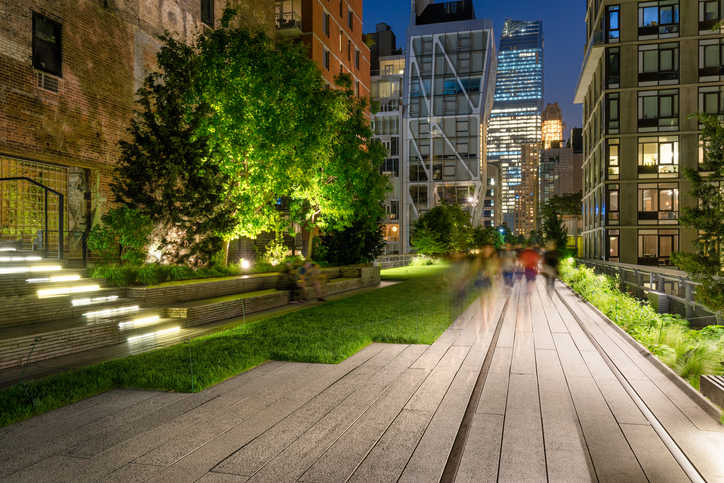Discovering new cities and seeing how they reinvent themselves is a spectacular way to travel. In this new concept, “High Lines” have become a new way to take advantage of seemingly useless spaces and provide green areas in downtown areas of cities like New York.
The old abandoned train lines in New York City were the perfect setting to launch this project that has become an icon for the city and inspired other cities around the world to resue industrial spaces and transform them into tourist attractions.

A bit of history
Up until the 1970s, the train lines were still being used to transport goods and people. However, a new plan drawn up by the American government left the tracks without trains and traffic was diverted on newer railway lines to reach the city centre faster. As you can imagine the tracks were neglected, and little by little fell into disrepair until local residents started to complain and to search for a solution. Some years later, construction of the High Line Elevated Park was given the green light, and a large pedestrian park was created that ran along the old tracks and would serve as a tourist attraction for New York City. Some experts have compared its importance to the Empire State Building or the Statue of Liberty. The park was designed by the landscape architecture firm James Corner Field Operations and the architects’ studio Diller Scofidio + Renfo.
The park was developed in three separate phases to measure its social impact. In June 2009, the first section was opened to the delight of local residents. Two years later, in 2011, the second phase was completed, and the third and final phase was completed in 2014 with all sections of the old railway line now open to the public.

High Line
The High Line covers a total length of 3km, allowing visitors to admire the views across Manhattan, the skyscrapers and the rest of NYC from the tracks elevated several metres off the ground.
The park runs through the streets close to the old Chelsea Piers, which was where the Titanic was supposed to dock after its maiden voyage. Another great thing about the park is its central location, if you take the subway from the nearest station to the park, you’ll be in Times Square in a matter of minutes.
To enjoy a stress-free visit, you should take into account that the walk through Chelsea Market and the High Line takes about two or three hours depending on the time you spend admiring the stalls in Chelsea Market and the stops you make along the way to take in the impressive views and selfies!

The park offers Tai Chi classes, meditation, guided tours and poetry recitals on a regular basis. Cultural and family events, along with a special programme for teenagers are also some of the things you can find on a visit to High End Elevated Park. If you’re planning a visit to New York, make sure to have a look at the park’s website to check for upcoming events and times.
Other examples
New York isn’t the only city to have carried out such an ambitious initiative; Seoul also has a similar park built by the Dutch architectural studio MVRDV. Seoullo 7017 Skygarden is home to the largest variety of Korean plant species in the world and runs along a 1km stretch of an old inner city motorway. To date, 24,000 plants have been added to the park.



Paris also boasts an elevated park on the city’s former railway line. Coulée verte Rene-Dumont was opened in 1993 with many saying it played a major part in influencing its New York equivalent. Today, the park is considered one of the city’s iconic symbols.


The city of London has just given the go-ahead to construct the Camden Highline, a new park in the trendy Camden neighbourhood. The park will run from the world-famous market, crossing seven bridges along the way, all the way to one of the busiest train stations in the English capital, Kings Cross. The project is still in its infancy as the news about the ambitious plan has just been released recently, but the idea is that Studio Weave and Architect 00, two companies with an impressive track record, will lead the project.


These initiatives aim to put cities at the top of the rankings in terms of reducing pollution, pedestrian walkways and green areas and offer tourists an alternative and an extra green lung to the cities.







